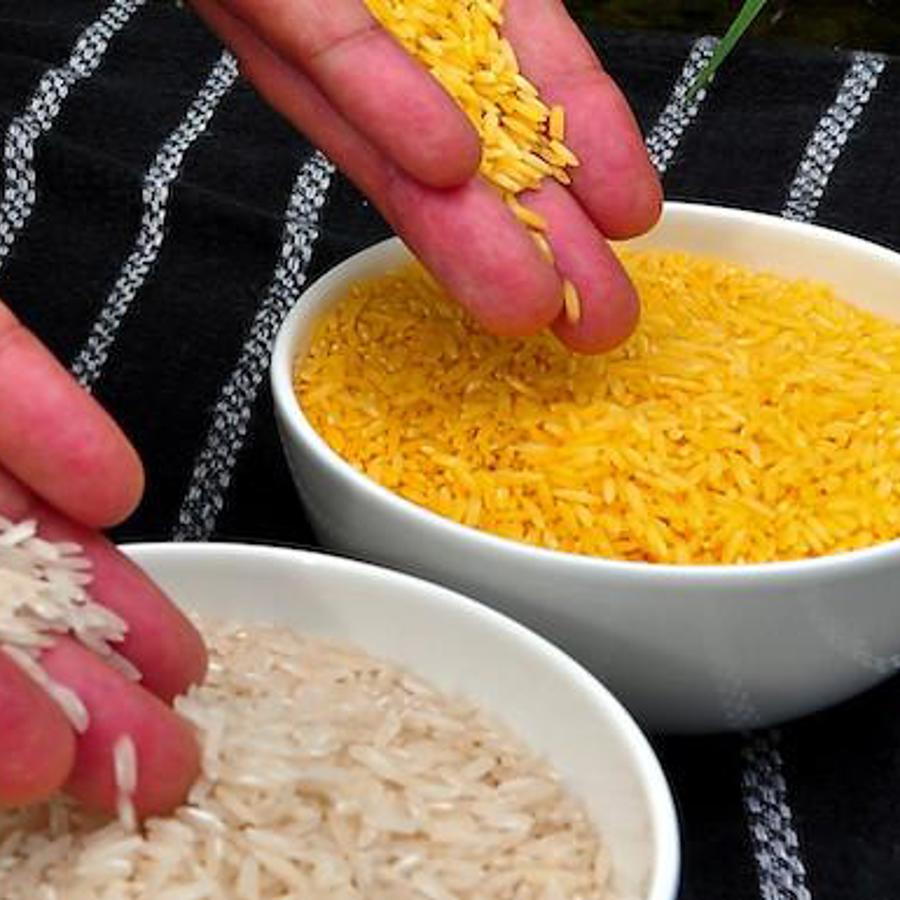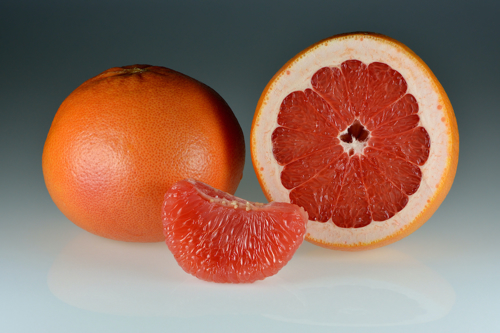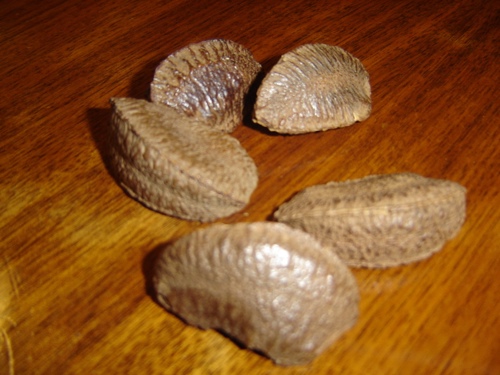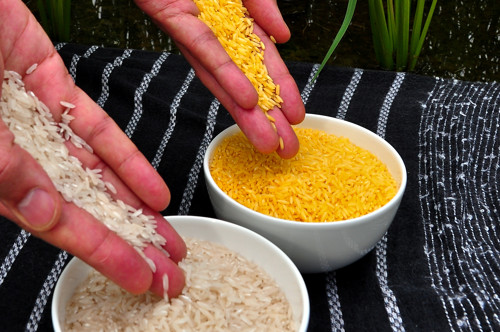
Are genetically modified foods bad for me?
October 17, 2013

- Related Topics:
- Genetic myths,
- Bioethics,
- Genetic engineering,
- GMOs,
- Plant biology
A curious adult from California asks:
"Are genetically modified (GM) foods bad for me?"
Editor’s Note (2021): When this article was originally published, the author did not distinguish between “GM,” or genetically modified, and “GMO,” which is a specific legal term for a genetically modified organism. However, for the purposes of this article, GM foods and GMOs are the same. You can read more about the legal definition of GMOs here.
Scientifically there is nothing about the process of genetically modifying a food to make it dangerous. All a scientist does is add one or at most a handful of new genes to the crop.
Since plants have tens of thousands of genes, adding a few extra is really no big deal.
In fact, making new varieties of crops the old fashioned way would probably be more risky. Often crops are forced to develop new traits by blasting seeds with radiation or treating them with harsh chemicals. Pink grapefruits, peanuts with harder shells, black currants, and different varieties of barley, oats, wheat, and cocoa were all created this way.1
And this is just a partial list. Another example of a key crop created with these methods is Calrose rice, which makes up over 85% of the rice produced by the state of California!2 None of these crops have been associated with any health issues.
Because of how these new varieties were made, they all have lots of collateral damage in their DNA. Instead of precisely adding a few genes to a plant’s DNA, the plants’ DNA ends up riddled with hundreds or even thousands of mutations. Making new crop varieties this way is a messy business.
And yet, as I noted earlier, none of these radiation-induced crops has caused any sort of health problems despite all of this damage.1 What all of this means for GM foods is that the process of creating new varieties by adding a gene is not in itself dangerous. If anything, they should be less dangerous than that pink grapefruit you had for breakfast.

Not All GM Foods are Created Equal
Now having said this, not every conceivable GM food would be safe. If we added a gene that made lettuce make arsenic, this would obviously be bad for you. But it wouldn’t be the process, it would be the gene that was added.
This is obviously an extreme example but we can come up with better ones. A real life example happened when scientists put a Brazil nut gene into soybeans. This gene was put in to increase the amount of protein in soy but during testing the scientists found that people allergic to Brazil nuts were also allergic to this soy.3 What bad luck!
See, people who are allergic to something tend to be allergic to the product of only one or a few of the plant’s genes. The scientists here happened to pick the Brazil nut gene most people were allergic to. This shows the importance of testing GM foods before they are marketed.
Another potential problem is what the gene allows farmers to do to the plant. For example, imagine scientists put a gene into a plant that lets it survive some toxic chemical being sprayed on it. Here the danger would not be the gene or the plant but any residue of the chemical left on the crop … which could eventually get to our mouths.

Again there is a real life example of this (although not as clear cut as the Brazil nut one). Most GM crops on the market right now have a few genes added that make them resistant to an herbicide called RoundUp. The concern here for human health is not the genes that made these plants RoundUp-ready, but the possible side effects of RoundUp.
So far there doesn’t appear to be any issues with RoundUp (click here for the details). This makes sense given how the herbicide works, but it was definitely something that needed testing.
It is also important to keep in mind that RoundUp is still used whether GM crops are planted or not. It is just used less often and not directly on the plants.
All of these examples point to the gene being a potential problem and not the technique. GM foods should not all be lumped together and assumed to be dangerous. Each needs to be tested on its own merit.
Risk versus Benefit
It isn’t always easy to tell whether the benefit from a GM crop is worth the risk. But for some it is so obvious that objections are almost unconscionable.
One of these is golden rice. This crop was the brainchild of a scientist named Dr. Ingo Portykus and was created to save the millions of lives and prevent the hundreds of thousands of cases of irreversible blindness caused each year because people don't get enough vitamin A in their diet.4 And the seeds are free for anyone who wants to use them to grow rice.
Basically all they did was add three genes that caused the rice to make beta carotene, the chemical that eventually becomes vitamin A, in the kernel. That is it. Other parts of the rice plant already make beta carotene so it is not some new property rice never had before. It simply causes the rice kernel to make beta carotene like the rest of the plant.4
The gene isn’t even likely to spread from this rice to other strains or to escape into the wild because of how rice reproduces. The rice has even been shown to provide vitamin A to people who eat it.4
If GM foods weren’t all lumped together, planting this crop would be a no brainer. The benefits of saving hundreds of thousands of people each year from irreversible blindness outweighs the truly miniscule risk of these genes escaping into the wild. And even if it did, would the risk of having a weed make beta carotene outweigh the benefit of saving all these people? I think not.
And yet, thirteen years later, no one is eating this rice because all GM foods are seen as dangerous. GM foods should not all be lumped together.

Of course, not all GM foods are so easy in terms of risk and benefit. RoundUp ready crops are an example of one that might be on the fence.
Remember that these crops are resistant to RoundUp which means farmers can directly spray them onto the crops. This kills weeds but leaves the crop alone.
RoundUp ready crops increase yield (you get more food per acre) which is a good thing for both farmers and a future world with nine billion people. Using RoundUp also means you don’t have to churn up the soil leading to a healthier, more vibrant soil environment.
Of course the downside is that you end up using a lot of RoundUp. If it doesn’t break down fast enough, it might build up in the environment. Maybe it would prove dangerous at these higher levels. There is also the temptation of spraying too often which will lead to RoundUp-resistant weeds. (The gene won’t move to the weed, it will become resistant through natural selection.)
So RoundUp ready crops are more of a mixed bag than golden rice. Various government agencies have deemed them safe but since there is no obvious health benefit (it helps the soil and farmers), there can be a reasonable argument made against them.
Other GMOs might not be worth the risk. For example, glowing fish were created just to be colorful and unique pets. These fish might not be worth the risk of the gene that causes the glow getting into the environment. There is little benefit to these fish and so even though they pose little risk, they simply may not be worth having pretty fish in your living room.
So the bottom line is that there is nothing bad about the technology of putting a gene into a plant (or an animal for that matter). Each GMO needs to be evaluated on its own risks and benefits. They should not all be lumped together.
Read More:
- KQED: Greenpeace or Goldenwar
- Biotechnology 4 U: How to get a gene into a plant
- The Golden Rice Project: Golden Rice
- Science Magazine: Another setback for golden rice

Author: Dr. Barry Starr
Barry served as The Tech Geneticist from 2002-2018. He founded Ask-a-Geneticist, answered thousands of questions submitted by people from all around the world, and oversaw and edited all articles published during his tenure. AAG is part of the Stanford at The Tech program, which brings Stanford scientists to The Tech to answer questions for this site, as well as to run science activities with visitors at The Tech Interactive in downtown San Jose.
 Skip Navigation
Skip Navigation
